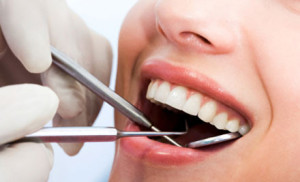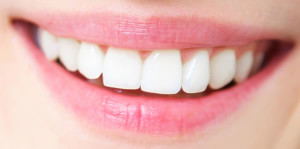In the dental implant clinical assessment with an implant dentist, oral health is assessed. If the patient is a good candidate for implants, a dental cone beam CT (CBCT) scan is taken to evaluate the quality and quantity of the bone.
Following the consultation, a brief meeting with an implant co-ordinators will reveal the treatment costs and available times to book in your first appointment/s.
A formal detailed treatment plan follows, which includes a covering letter from the implant dentist, your treatment options and costs, charting, guarantee, risks and aftercare information.

Using the 3D dental bone beam CT (CBCT) Scan images to direct the placement and ascertain the type of implant to use, a titanium implant is carefully screwed into the bone under the gum, and sutured using dissolvable stitches. Sometimes a healing cap is placed immediately, thus saving the need to do this in the restoration phase.
If deemed necessary, this stage may be proceeded by the extraction of failing teeth and / or where bone is lacking, bone restoration.
A formal detailed treatment plan follows, which includes a covering letter from the implant dentist, your treatment options and costs, charting, guarantee, risks and aftercare information.
Integration is the period of time needed to safely and securely restore the crown, bridge or denture to the dental implant/s.
During this period of time, the dental implant integrates with the patients bone – this is called ‘osseointegration’ and can take 2 to 8 months, depending on the patients treatment plan.

The restoration is the phase where the crown, bridge or denture are created and placed onto the dental implant/s.
This phase is takes 2 – 6 appointments (depending on complexity) with about two weeks between them, and will include:
- Uncovering the dental implant and placing a healing abutment. Sometimes, this procedure is done at the same time as implant placement.
- Taking final impressions and colour matching against the adjacent teeth
- Bite registration – ensuring that the occlusion (the bite) is comfortable. Not required for all cases.
- Try-in – trying in the new crown, bridge or denture – then sending any adjustments back to the laboratory. Not required for all cases.
- Final fit – placing the abutment and crown, bridge or denture.
For an optimum aesthetic outcome, we team up with highly skilled dental technicians to fabricate the crowns, bridges and dentures.

Your implant treatment plan doesn’t end when the crowns are placed.
It is imperative that you follow an improved hygiene regime to maintain good oral health and help the longevity of your implants.
This means an improved hygiene regime at home following prescribed techniques, visiting a hygiene therapist at least every 6 months and returning on annually assess the implants, gums and hygiene levels.



